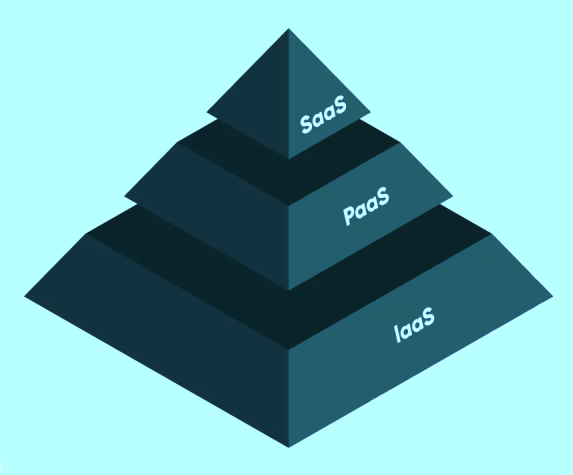
The idea of cloud computing emerged in the early 2000s as businesses began seeking alternatives to the cost and complexity of maintaining on-premise servers and infrastructure. The first major development was Infrastructure as a Service (IaaS), which provided virtualized computing resources such as servers, networking, and storage on-demand. Instead of owning physical hardware, companies could rent these resources from providers like Amazon Web Services (AWS), Microsoft Azure, or Google Cloud.
This pay-as-you-go model allowed businesses to scale quickly and reduce upfront costs, laying the foundation for the modern cloud era.
As cloud technology matured, the focus expanded beyond just infrastructure. This led to the rise of Platform as a Service (PaaS), which provided developers with a ready-made environment to build, test, and deploy applications. Unlike IaaS, where users still needed to manage operating systems and middleware, PaaS abstracted much of the underlying complexity.
Early examples include Google App Engine and Microsoft Azure App Services. PaaS made it easier for developers to focus on writing code rather than managing infrastructure, accelerating innovation and reducing time-to-market for applications.
Following the growth of IaaS and PaaS, Software as a Service (SaaS) emerged as one of the most consumer-visible layers of cloud computing. SaaS delivers fully functional software applications over the internet, accessible through a browser or app without installation or heavy IT management. Salesforce, launched in 1999, is often credited as the pioneer of SaaS with its customer relationship management (CRM) platform. Since then, SaaS has become ubiquitous in tools like Google Workspace, Slack, Dropbox, and Zoom, providing organizations with scalable, subscription-based software solutions.
The key differences among these three models lie in the level of abstraction and control. With IaaS, organizations maintain the most control, as they are responsible for managing operating systems, applications, and data, while the provider manages hardware. PaaS shifts more responsibility to the provider by managing the runtime, middleware, and development tools, leaving users to focus on application logic.
SaaS abstracts everything, with the provider managing the entire stack while users simply consume the software. This tiered model gives businesses the flexibility to choose how much they want to manage versus outsource.
Below are a few comparison points on various categories between the three services.
| Aspect | IaaS (Infrastructure as a Service) | PaaS (Platform as a Service) | SaaS (Software as a Service) |
|---|---|---|---|
| Definition | Provides virtualized computing resources like servers, storage, and networking. | Provides a ready-made platform with tools for developing, testing, and deploying applications. | Provides complete software applications delivered over the internet. |
| User Responsibility | Manage applications, data, runtime, and OS. | Manage only applications and data. | Only use the software; provider manages everything. |
| Provider Responsibility | Hardware, networking, virtualization. | Hardware, networking, virtualization, OS, middleware, runtime. | Full stack: infrastructure, platform, and application. |
| Control Level | Highest (flexibility for customization). | Medium (focus on code, not infrastructure). | Lowest (just use the app). |
| Use Cases | Hosting virtual machines, data storage, disaster recovery, scaling infrastructure. | Application development, API management, DevOps, microservices. | CRM, collaboration, communication, productivity tools. |
| Examples | AWS EC2, Google Compute Engine, Microsoft Azure Virtual Machines. | Google App Engine, Heroku, Microsoft Azure App Services. | Salesforce, Google Workspace, Dropbox, Zoom. |
To put it in simpler terms, IaaS is ideal for enterprises that want scalable computing power for big data analytics, storage solutions, or hosting virtual machines, who also have enough engineering task force to build the top layers.
PaaS is popular among software development teams that need an efficient environment for building applications without managing infrastructure. SaaS is best suited for end-users and organizations seeking ready-to-use software such as project management tools, HR systems, or communication platforms. Each model caters to different needs, from infrastructure backbone to developer empowerment to end-user functionality.
Today, these three service models coexist and complement each other in the broader cloud ecosystem. For example, a business may host its servers on AWS (IaaS), build custom applications using Google App Engine (PaaS), and run daily operations with tools like Microsoft 365 (SaaS). Together, SaaS, PaaS, and IaaS represent the evolution of cloud computing from infrastructure outsourcing to complete software delivery, fundamentally changing how organizations adopt and scale technology in the digital era.

Technologist, Cloud Promoter, Automation and Continuous Optimization Advocate.